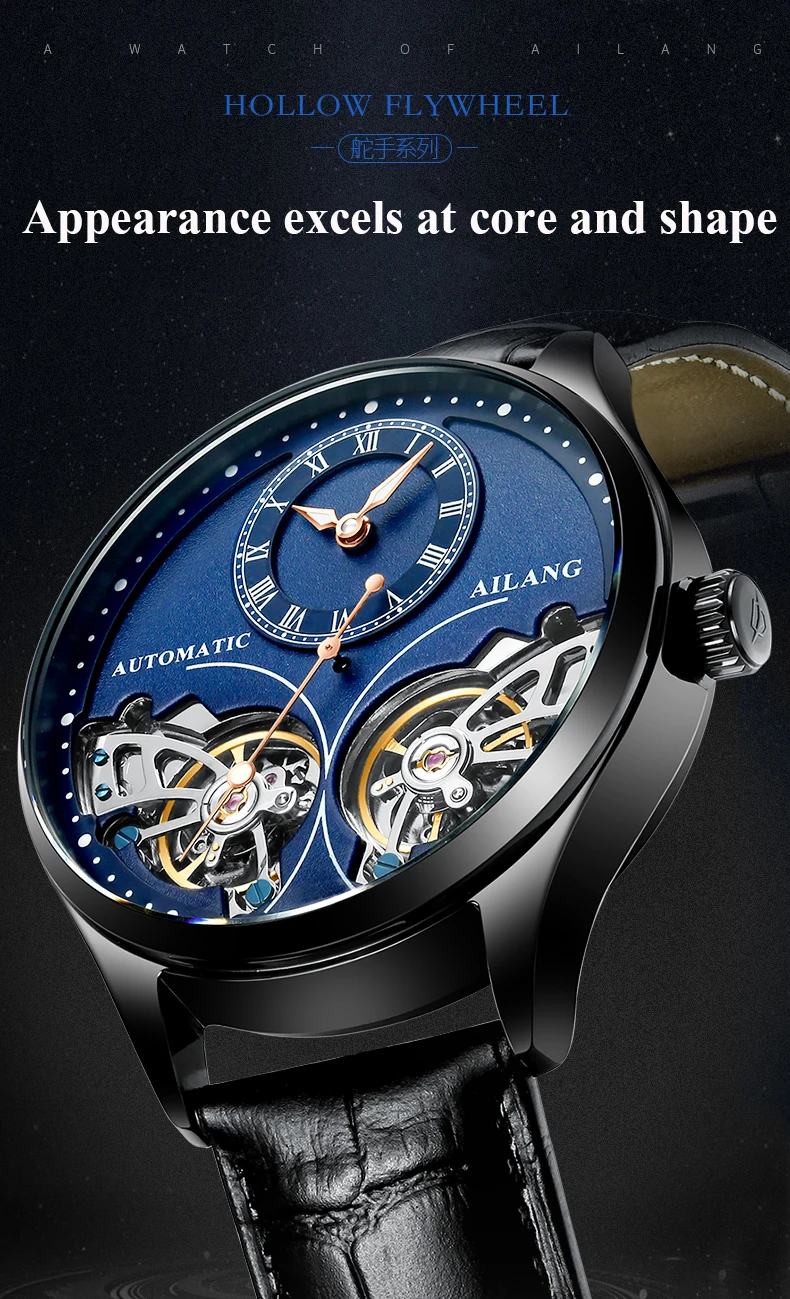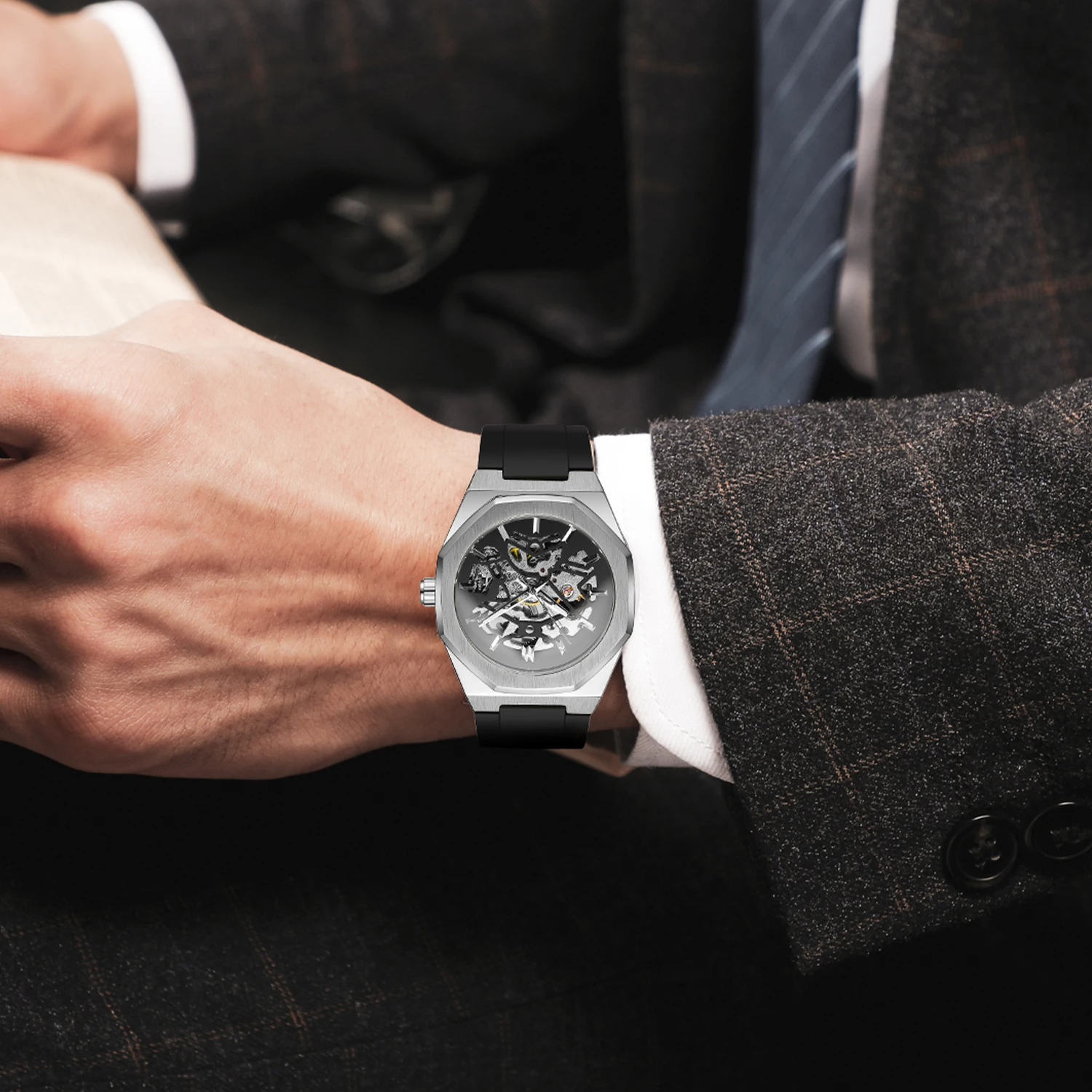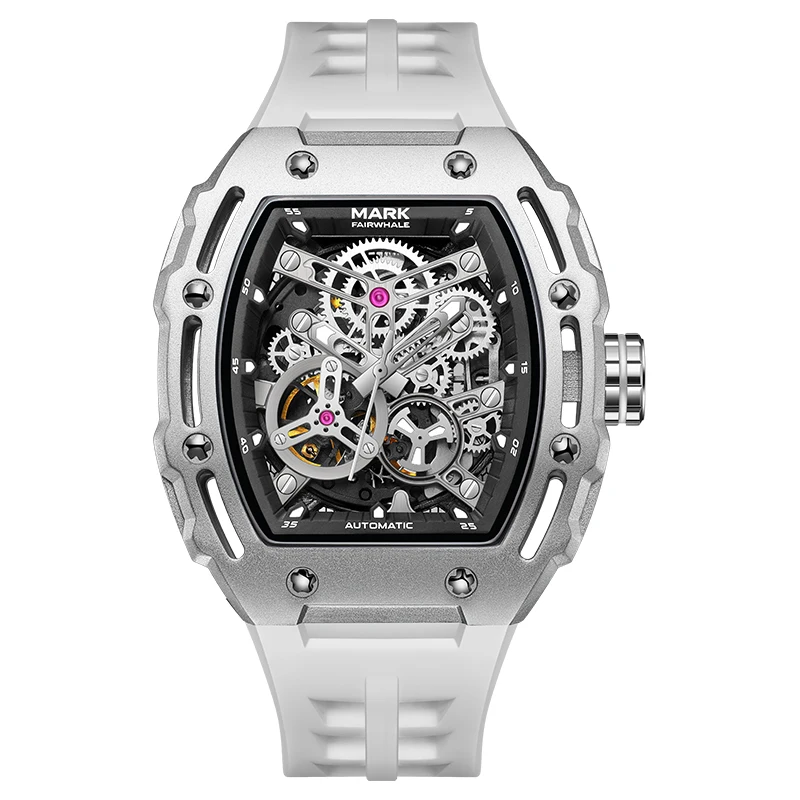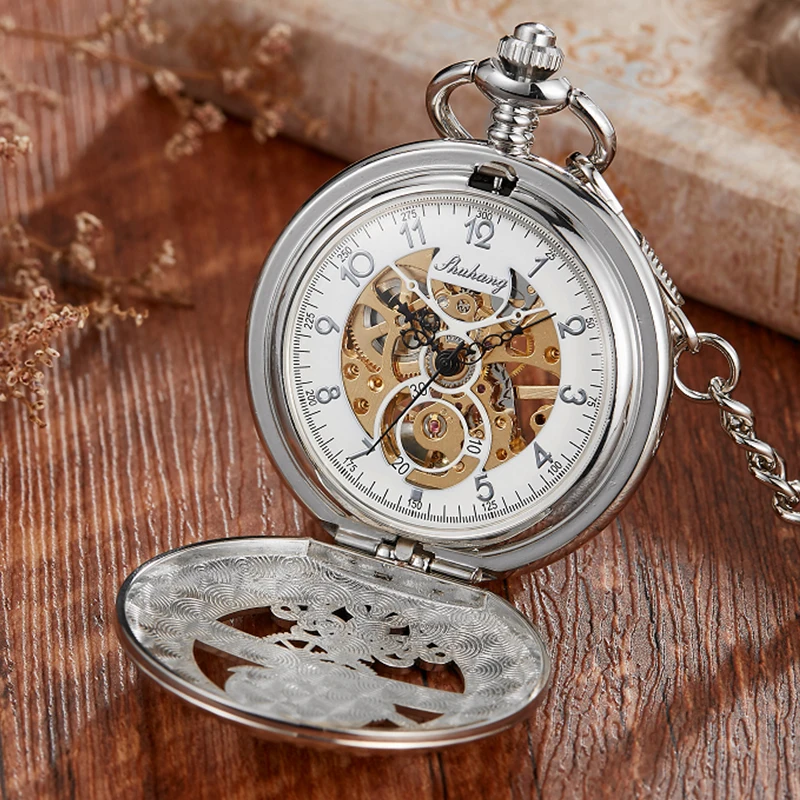What Is an Open Heart Watch Display?
An open heart watch is a fascinating timepiece that features a small opening or “window” on the dial, revealing a glimpse of the mechanical movement working inside. This aperture typically showcases the balance wheel and escapement—the components responsible for the watch’s timekeeping rhythm.
The term “open heart” perfectly captures what you’re seeing: the beating heart of the watch exposed through a carefully designed opening. Unlike fully enclosed watches that hide their inner workings, open heart designs celebrate the mechanical artistry by putting it on display.
What makes these timepieces special is the connection they create between wearer and watch. With each glance, you witness the continuous motion that marks the passing of time—a visual confirmation that the mechanical marvel on your wrist is alive and working.
This design approach differs from standard watches by intentionally revealing what would normally remain hidden, striking a balance between traditional dial aesthetics and mechanical fascination. Many watch enthusiasts are drawn to open heart automatic watches because they offer a window into horological craftsmanship without completely sacrificing dial space for time reading.
The visible movement creates a dynamic focal point that changes constantly as you move, making each watch essentially animate in a way that static dials cannot match. This visual engagement is part of what draws people into the captivating world of open heart watches, creating timepieces that are as much about emotional connection as they are about telling time.
The “Beating Heart”: Understanding What You’re Seeing
When you peer through an open heart display, you’re witnessing the very essence of mechanical timekeeping in motion. But what exactly are those tiny components working tirelessly beneath the dial?
The star of the show is typically the balance wheel—a small weighted wheel that oscillates back and forth at a consistent rate. This component acts as the watch’s regulating organ, controlling the rate at which time passes. Connected to the balance wheel is the escapement mechanism, which performs two critical functions:
- It provides energy to the balance wheel to maintain its oscillation
- It counts these oscillations to advance the watch hands at the correct rate
Together, these components form the “heartbeat” of your mechanical watch. The balance wheel typically oscillates at a rate of 21,600 to 28,800 vibrations per hour (3-4 Hz), creating that characteristic steady tick-tick-tick rhythm.
What you’re observing through the open heart aperture is fundamentally different from a quartz watch’s movement. While quartz watches operate with near-silent electronic pulses, mechanical watches display an actual physical oscillation—visible evidence of engineering excellence.
The components visible through an open heart display include:
- Balance wheel: The rhythmically swinging wheel that regulates timekeeping
- Hairspring: The delicate spiral spring that controls the balance wheel’s oscillation rate
- Escape wheel: The toothed wheel that interacts with the pallet fork
- Pallet fork: The anchor-shaped component that releases energy to the balance wheel
This intricate dance of components represents centuries of watchmaking evolution. The fundamental principles seen in today’s mechanical watches share their heritage with the history of dive watch engineering and other precision timepieces—each advance in materials and design building upon previous innovations.
Historical Development of Open Heart Designs
The journey toward open heart watches began long before they became a popular style. Traditionally, mechanical watches completely concealed their movements behind solid metal dials and cases. The craftsmanship remained hidden, appreciated only by watchmakers during servicing.
The concept of showcasing a watch’s movement emerged gradually. Pocket watches were among the first timepieces to feature display backs—transparent case backs that allowed owners to admire the movement without affecting the dial’s appearance. This represented the first step toward celebrating mechanical beauty rather than simply hiding it away.
As watchmaking techniques evolved, manufacturers began experimenting with ways to showcase movements from the front. The full skeleton watch came first—with nearly the entire dial removed to reveal the complete movement. Open heart designs followed as a more subtle alternative, offering a glimpse of the movement while maintaining most of the traditional dial.
Advancements in manufacturing precision proved crucial to this evolution. Modern machining techniques allowed for smaller, more reliable movements that could be confidently displayed. Similarly, improvements in crystal materials created clearer views of these mechanical wonders.
This progression from purely functional timekeeping to mechanical art mirrors the broader evolution of dive watch technology and other horological developments. Both represent the watch industry’s movement toward celebrating engineering as an art form in itself.
By the late 20th century, open heart designs had become established as a distinct watch category, offering a perfect middle ground between fully covered dials and completely skeletonized watches. They continue to evolve today, with watchmakers finding increasingly creative ways to frame and showcase their mechanical hearts.
The Craftsmanship Behind Open Heart Watches
Creating an open heart watch presents unique challenges beyond standard watchmaking. When a movement will be visible to the wearer, every component must not only function perfectly but also look beautiful—a dual requirement that demands exceptional skill.
Watchmakers must carefully consider which parts of the movement deserve showcase status. The balance wheel is favored because its constant motion creates visual interest, but this exposure requires additional attention to detail and finishing.

These visible components undergo specialized decorative treatments:
- Côtes de Genève: Parallel striped patterns that create a wave-like effect across plates and bridges
- Perlage: Overlapping circular patterns resembling tiny pearls
- Anglage: Polished beveling along the edges of components
- Blued screws: Heat-treated screws that take on a deep blue color
- Polished gold chatons: Small settings that hold jewel bearings in place
Each finishing technique serves both aesthetic and practical purposes. Polished surfaces reflect light beautifully while also reducing friction. Textured surfaces help prevent dust accumulation while creating visual interest. Every visible screw, gear, and spring receives attention that would be unnecessary in a fully enclosed movement.
The balance between function and beauty extends to the design of the aperture itself. Watchmakers must determine the optimal size and shape of the opening—large enough to provide a meaningful view but not so large as to compromise dial integrity or readability.
For those interested in more extensive movement visibility, automatic skeleton watches take this concept even further by removing most of the dial entirely. However, open heart designs achieve something remarkable in their restraint—they create a focused window that draws attention to the movement’s most dynamic elements while maintaining the watch’s primary timekeeping function.
Open Heart vs. Skeleton: Clearing Up the Confusion
One of the most common sources of confusion for watch enthusiasts is understanding the difference between open heart and skeleton watches. Though related, these designs represent distinct approaches to movement visibility:
| Feature | Open Heart Watches | Skeleton Watches |
|---|---|---|
| Dial Coverage | Mostly intact with specific opening | Largely or completely removed |
| Visibility | Shows limited portion (usually balance wheel) | Shows entire movement |
| Readability | Typically maintains clear time reading | Can sometimes sacrifice readability for display |
| Visual Focus | Directs attention to specific components | Displays the complete mechanical system |
| Complexity | Moderate manufacturing complexity | High manufacturing complexity |
An open heart watch creates a specific “window” or aperture in an otherwise conventional dial. This focused approach directs your attention to particular components—typically the balance wheel—while maintaining the overall structure of a traditional watch face. The effect is somewhat like having a small aquarium view into the mechanical depths.
In contrast, mechanical skeleton watches remove most or all of the dial, exposing the entire movement to view. The hands often appear to float above an intricate mechanical landscape, with the entire timekeeping system visible beneath them. While visually striking, this approach can sometimes make the actual time harder to read at a glance.
Between these two approaches lies the “openworked” style—watches that feature multiple apertures or partial skeletonization while maintaining some dial elements. These create a middle ground that offers extensive movement visibility without completely abandoning dial structure.
The choice between these styles ultimately comes down to personal preference. Open heart watches appeal to those who appreciate a hint of mechanical beauty while maintaining traditional watch aesthetics. Skeleton watches attract enthusiasts who want to see and appreciate every gear, bridge, and spring in the movement.
Design Variations and Placement Styles
Open heart watches offer remarkable design flexibility, with watchmakers employing various approaches to showcasing the movement. The aperture’s position, size, and shape all contribute to the watch’s overall aesthetic and personality.
The most common aperture positions include:
- 6 o’clock position: The traditional and most popular placement, creating balance with the brand name typically at 12 o’clock
- Center dial: A dramatic approach that makes the movement the focal point of the entire watch
- 9 o’clock position: Less common but creates interesting asymmetry
- Multiple small openings: Some designs feature several smaller windows instead of one larger aperture
Aperture shapes vary widely, each creating a different visual effect:
- Circular openings for a classic, porthole-like view
- Teardrop shapes that add a touch of elegance
- Irregular organic forms that follow the contours of specific movement components
- Geometric patterns like hexagons or rectangles for a more contemporary look
Some watchmakers take a minimalist approach with a small, subtle opening that offers just a glimpse of the balance wheel. Others make the open heart feature the defining characteristic of the watch with a large, prominently positioned aperture.
The integration of open heart displays represents an important consideration in dress watch design, where balance and restraint are paramount. The most successful designs maintain harmony between the technical display and the overall aesthetic of the timepiece.
Each brand tends to develop its own signature approach to open heart design. Some emphasize tradition with classically positioned round apertures, while others push boundaries with avant-garde shapes and placements. This diversity ensures that there’s likely an open heart style to match any personal preference.
Maintenance and Care for Open Heart Watches
Open heart watches require slightly more attentive care than their fully-enclosed counterparts due to their exposed components. With proper maintenance, however, these mechanical marvels can provide decades of reliable service.
The aperture in the dial creates additional entry points for dust and moisture—the two main enemies of any mechanical watch movement. While modern gaskets and seals provide excellent protection, owners should be particularly mindful of these potential threats:
- Avoid exposing open heart watches to excessive dust or humidity
- Never operate the crown in dusty or wet environments
- Consider more frequent professional servicing (every 3-4 years)
- Store the watch in a watch box or case when not in use

The visible balance wheel can also serve as an early warning system. If you notice irregular motion, hesitation, or stopping, these may indicate issues requiring service. Similarly, any visible dust accumulation suggests it’s time for professional cleaning.
Magnetism presents a special concern for open heart watches. The exposed balance spring can become magnetized by everyday electronic devices, causing the watch to run fast or erratically. Consider keeping your watch away from strong magnetic sources like speakers, magnetic clasps, and some electronic devices.
Regular servicing is crucial for maintaining accuracy and preventing wear. Professional watchmakers will disassemble, clean, lubricate, and regulate the movement to ensure optimal performance. Understanding how long automatic watches last with proper care can help you appreciate the importance of regular maintenance.
With appropriate attention, your open heart watch will continue to reveal its beating mechanical heart for years to come, providing both reliable timekeeping and a continuous display of horological artistry.
Why Choose an Open Heart Watch: Benefits and Appeal
What makes open heart watches so appealing to watch enthusiasts and casual wearers alike? The answer goes beyond mere aesthetics to touch on deeper connections between people and their timepieces.
Living Connection: Unlike static watch dials, an open heart display creates a sense of life and movement. The constant motion of the balance wheel serves as a visual reminder that your watch is actively working—a miniature mechanical companion on your wrist.
Mechanical Appreciation: For those fascinated by engineering and mechanics, an open heart watch offers a window into horological craftsmanship without the visual complexity (or higher price) of a fully skeletonized timepiece.
Balanced Design: These watches strike a perfect middle ground between traditional solid dials and fully exposed skeleton watches. The limited aperture maintains readability while still showcasing mechanical beauty.
Conversation Starter: Few accessories prompt questions and conversations like an open heart watch. The visible movement naturally draws attention and creates opportunities to share your appreciation for mechanical craftsmanship.
Value Proposition: Open heart watches typically offer the appeal of visible mechanics at a more accessible price point than comparable skeleton watches, making them an excellent entry point into the world of mechanical watch appreciation.
The mechanical nature of these timepieces connects them to horology’s rich heritage. While electronic devices may become obsolete in years, the fundamental principles driving automatic watches have remained essentially unchanged for centuries.
Many wearers develop a special relationship with their open heart watches, checking periodically throughout the day to watch the balance wheel oscillate—a meditative moment connecting them to the continuous flow of time itself. This emotional connection transforms the watch from mere accessory to something more meaningful.
Classic Automatic Dress Watches, Day Date Automatic Watches, Perpetual Calendar Automatic Watches
Price range: $540.60 through $574.60 Select options This product has multiple variants. The options may be chosen on the product pageAutomatic Chronograph Watches, Chronograph Pilot Watches
Price range: $233.36 through $237.58 Select options This product has multiple variants. The options may be chosen on the product pageClassic Automatic Dress Watches, GMT Automatic Watches, GMT Pilot Watches
Price range: $1,240.86 through $1,463.33 Select options This product has multiple variants. The options may be chosen on the product pageAutomatic Chronograph Watches, Classic Style Dive Watches
$3,053.06 Select options This product has multiple variants. The options may be chosen on the product pageAutomatic Skeleton Watches, Open Heart Automatic Watches
$98.36 Select options This product has multiple variants. The options may be chosen on the product pageBronze Automatic Watches, Military Inspired Automatic Watches, Professional Spec Dive Watches
Price range: $1,442.21 through $1,442.82 Select options This product has multiple variants. The options may be chosen on the product page
Considerations Before Purchasing
Before investing in an open heart watch, consider these key factors to ensure you select a timepiece that will bring lasting satisfaction:
Aesthetic Integration: Consider how the open heart feature complements the overall watch design. Does the aperture enhance the dial’s appearance, or does it seem like an afterthought? The best designs integrate the opening naturally into the overall aesthetic.
Readability Balance: Some open heart designs sacrifice time-reading clarity for mechanical display. Examine whether the hour markers and hands remain easily visible against the movement background, particularly in different lighting conditions.
Movement Quality: Since the movement is partially visible, its quality becomes more important than in fully-cased watches. Look for smooth operation of the balance wheel, fine finishing on visible components, and proper decoration appropriate to the price point.
Aperture Placement: Consider whether the position of the open heart display appeals to your personal taste. Traditional 6 o’clock placement offers balance, while center placement creates a more dramatic focal point.
Long-term Appeal: Ask yourself whether the open heart feature will continue to fascinate you over time or might eventually become a distraction. The best choice is one that you’ll appreciate years after the initial novelty wears off.
Overall Specifications: Don’t let the open heart feature overshadow other important aspects like case size, water resistance, crystal material, and strap quality. The complete package should meet your practical needs.
For those seeking even more mechanical visibility, skeleton watches offer a more comprehensive view but often at a higher price point and sometimes with reduced readability.
Remember that open heart watches tend to lean more toward the dressy or casual end of the spectrum rather than tool or sports watches, so consider how this style will fit your wardrobe and lifestyle.
Popular Open Heart Watch Styles
Open heart designs have found their way into various watch categories, each interpreting the concept through different stylistic lenses:
Classic Dress Open Hearts: These feature minimal, elegant dials with traditional round apertures, usually at the 6 o’clock position. Thin cases, simple hour markers, and leather straps complete the refined look. The open heart serves as a subtle accent rather than the dominant design element.
Contemporary Open Hearts: Taking a more modern approach, these watches often feature unusual aperture shapes or placements. They might incorporate geometric patterns, contrasting materials, or asymmetric designs that make the mechanical display more prominent.

Casual Open Hearts: Blending everyday wearability with mechanical fascination, casual open heart watches typically feature more robust cases, luminous hour markers, and sportier straps. The aperture often receives additional protection against the rigors of daily wear.
Luxury Open Heart Designs: At higher price points, open heart watches may incorporate precious metals, hand-finishing techniques, and more complex visible mechanisms. Some even showcase additional complications like moonphases or power reserve indicators alongside the open heart display.
Semi-Skeleton Hybrids: These designs blur the line between open heart and skeleton watches by featuring multiple apertures or larger display areas while maintaining partial dial coverage. They offer more extensive movement views while preserving some traditional dial elements.
For those seeking truly distinctive timepieces, unique automatic watches often incorporate creative interpretations of the open heart concept, pushing boundaries of traditional design while celebrating mechanical craftsmanship.
Across all styles, what unites these watches is their celebration of mechanical engineering as an art form worthy of display. Whether subtle or dramatic, each open heart design invites the wearer to appreciate the living heart of their timepiece.
Frequently Asked Questions About Open Heart Watches
Is an open heart watch the same as an automatic watch?
No, though many open heart watches are automatic. “Open heart” refers to the dial design featuring a visible movement section, while “automatic” refers to the self-winding mechanism. You can find open heart designs in both automatic and hand-wound watches.
Do open heart watches require special maintenance?
They benefit from slightly more frequent servicing due to potential dust exposure through the aperture. Following the recommended service intervals (typically 3-5 years) and keeping the watch in clean environments will ensure long-term reliability.
Are open heart watches less durable than fully-cased watches?
When properly designed, an open heart watch can be just as durable as a conventional watch. The movement components visible through the aperture are the same ones found in any mechanical watch and are designed to operate reliably for decades.
How accurate are open heart watches?
Open heart watches can be just as accurate as fully-cased watches with similar movements. The visible balance wheel doesn’t affect timekeeping precision. Most quality mechanical watches maintain accuracy within 5-15 seconds per day.
Can I get an open heart watch with other complications?
Yes, many open heart watches incorporate additional features like date displays, power reserve indicators, or even mechanical calendar complications. However, each additional complication makes the design more complex and typically increases the price.
Will the movement eventually wear out from continuous operation?
With proper servicing every 3-5 years, a quality mechanical movement can last for generations. The visible wear on components is minimal, and watchmakers can replace any parts that eventually show signs of wear.
Are open heart watches suitable for formal occasions?
Many open heart watches, particularly those with classic designs and restrained apertures, are perfectly appropriate for formal wear. Their mechanical nature often makes them conversation pieces at formal gatherings.







